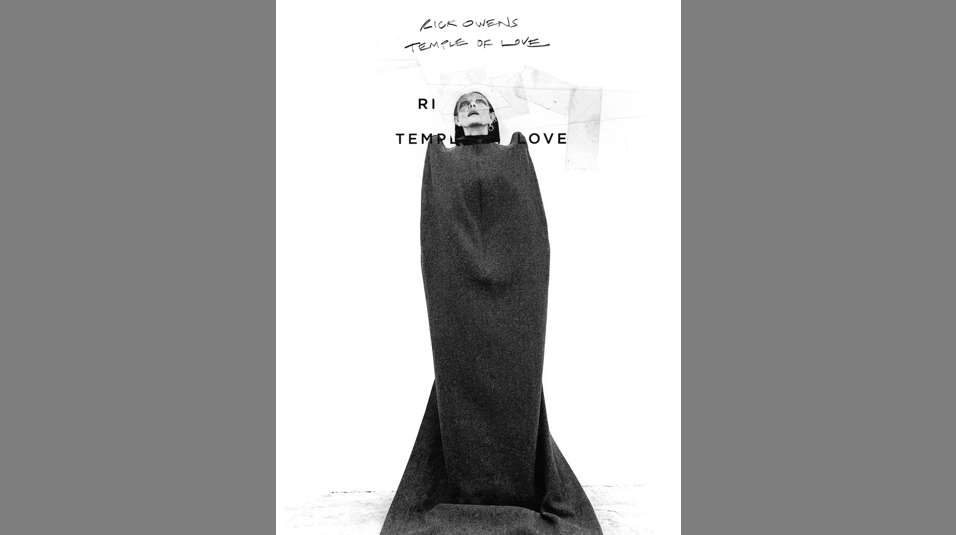
At Paris’s Palais Galliera, fashion visionary Rick Owens transforms the museum into a sanctuary where beauty meets chaos. His exhibition Temple of Love merges sacred devotion with raw sensuality, creating a space that feels both divine and defiant.
Known as both an avant-gardist and a mystic, Rick Owens reinvents fashion as a sacred ritual. With his exhibition Temple of Love, the Palais Galliera takes on the aura of a pagan cathedral, where darkness and light merge in an act of aesthetic and chaotic faith.
Since last June, the Palais Galliera has been hosting Rick Owens: Temple of Love. This Parisian retrospective is the first dedicated to the eccentric Californian designer. Conceived as a total work of art, it redefines the boundaries of the Fashion Museum, transforming it into a sensory sanctuary. Exploring each corner unsettles the senses and recreates the whole through light, matter, and a singular artistic vision.
Born in 1961 in Porterville, Rick Owens began as a pattern maker in Los Angeles before founding his own label in 1992. His early creations drew on salvaged materials — military bags, army blankets, washed leather — a form of upcycling before the word even existed. From the beginning, his work revealed a love of structure, rigor, and cold tones, especially his signature “dust” gray.
Settled in Paris since 2003, Owens has been deeply influenced by environmental culture. He stands as an independent, free, and provocative creator, endlessly producing work with his unapologetically personal signature. His runway shows are political statements rooted in artistic performance. His work restores strength and legitimacy to women while rejecting all forms of domination. He liberates his models from the rigid codes of traditional shows. Their walks are no longer measured to the millimeter. On his catwalks, one might see African American dancers taking center stage, or male nudity expressing both vulnerability and power. Like painter Edward Hopper drawing from his wife Jo, or Picasso depicting Dora Maar, Owens’s muse and partner, Michèle Lamy, fills every space — even a recreation of their California bedroom. His inspirations span from Gustave Moreau and Joseph Beuys to Steven Parrino.
Visiting the exhibition is an opening to a new world, an escape from the well-trodden paths of the mind. The first room, shrouded in brown felt darkness, reveals silhouettes frozen in a sacred ritual. Nine thematic chapels trace his Catholic childhood, Hollywood’s golden age, the tailoring of Charles James, and the punk and gothic scenes that shaped his raw aesthetic.
For the first time, Rick Owens has opened the museum’s curtains to natural light. For him, fabric is delicate, yet it vibrates. Every detail becomes a poetic gesture — a categorical rejection of sterile fetishism.
In a space conceived for adults, Owens celebrates the joy of decadence and the gleefully depraved beings who embody the tension between the sacred and the profane. At the center stands a life-sized sculpture of the creator himself, a figure of irony and faith that runs through all his work.
Outside, thirty brutalist concrete sculptures, the Prongs, scatter through the redesigned garden, where the blue morning glories of his childhood bloom. On the Renaissance façade, three statues are draped in sequin-embroidered capes, transformed into the Sisters of Mercy, gazing toward the Palais de Tokyo. Love, difference, fragility, and pagan devotion lie at the heart of Rick Owens’s vision. Temple of Love is an ode to creation itself.
The exhibition runs through January 4, 2026.


Comments